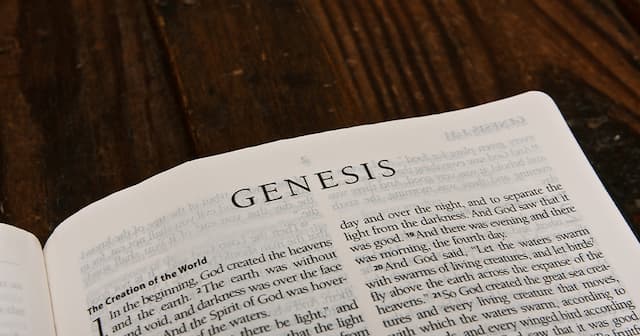A Day in the Life of: A Roman Centurion
By Elizabeth Prata

Today we have a scene in Luke. There was a centurion, not named, who had a slave who this centurion regarded highly. The centurion is only known by his profession, but his words are recorded. Further the centurion, a gentile no less, was commended by Jesus for his “great faith.”
Jesus Christ was very ready to show kindness to the centurion. He presently went with them (v. 6), though he was a Gentile; for is he the Saviour of the Jews only? Is he not also of the Gentiles? Yes, of the Gentiles also, Rom. 3:29. The centurion did not think himself worthy to visit Christ (v. 7), yet Christ thought him worthy to be visited by him; for those that humble themselves shall be exalted. (Source: Matthew Henry’s commentary on the whole Bible).
We read actually of four centurion in the Bible.
- Cornelius, a god-fearing centurion who Peter baptizes and is the pivot point of the beginning of the spread of the gospel to Gentiles (Acts 10–11).
- A centurion who was present at Jesus’ crucifixion and identified Jesus as the Son of God, Mark 15:39 and Matthew 27:54, as innocent as per Luke 23:47.
- A centurion whose slave Jesus heals from a distance, Jesus praises his faith (Matthew 8:5–13; Luke 7:2–10).
- Julius of the Imperial Regiment to whom Paul was turned over, (Acts 27:1) and who “treated Paul with consideration and allowed him to go to his friends and receive care”. v. 3
Roman centurion were known as brutal military men in battle. They lived an orderly lifestyle. They were also known as ingenious engineers, fearless leaders, intelligent and brave.

A Roman centurion carried the following equipment: a short sword called a Gladius as well as two spears called Pilum (plural, Pila). Body armor was fashioned from leather and a metal, usually bronze and iron. Metal hoops were tied to a leather harness, resembling later metal armor. He had a helmet called a galea topped with a crest, made of horsehair and sometimes dyed red. He had a shield called a scuta, which was large and heavy. His cape was held together across his neck by a brooch.

What was life like for a centurion?
A centurion was a soldier, but not just any soldier. He was a lifetime soldier, this was his life’s profession. He advanced through the ranks, accumulating authority along the way. A centuria was the smallest unit of a Roman legion. A legion was usually composed of 6,000 soldiers. Each legion was segmented into 10 cohorts, with each cohort containing 6 centuria. The centurion commanded about 100 men. If you wonder about the word centuria of 100 soldiers, and ‘century’ meaning 100, this is where we get the word from.
Here is a picture of it. All the soldiers in the illustration are a legion. Each colored column of men is a cohort. Each of the 6 squares in the cohort contain 1 centuria, with a centurion leading it. Source. The initials CT on the left mean Centurion. O is Optio, the centurion’s second in command.

Pause for a minute to think of the poor demon possessed Gadarene man in Mark 5:8-9. When Jesus asked the demon’s name, he said we are many, our name is legion. So that is about how many demons possessed the poor man!
The three main categories of ranks in a Roman legion were centurions, tribunes who commanded the cohort and were above a centurion, and prefects. Prefects administered things like a quartermaster does in our terms, but could command if senior officials were absent. The Legion Legate was the commander of the whole legion. We read of tribunes in the Bible. In some versions Acts 21 mentions it was a Tribune of a cohort who arrested Paul at the temple in Acts 21.
So the centurion has authority over 100 men. He himself is under authority to the Tribune who commands the cohort, and above him was the Legate who commanded the legion. See, I told you the life of a Roman was under layers of orderly hierarchical authority.
So when the Centurion said to Jesus, “For I also am a man placed under authority, with soldiers under myself; and I say to this one, ‘Go!’ and he goes, and to another, ‘Come!’ and he comes, and to my slave, ‘Do this!’ and he does it.'” (Luke 7:8). The centurion was saying he possesses authority to command men, and he is also under authority and must obey commands of those above him.
Centurions were paid more than a regular solider. Career opportunities to advance in rank awaited him, based on performance. They were supposed to be strict toward the men below them, and responsible for training them in the military arts, the success of which, the entire cohort and then the legion depended upon when action came their way.
From scripture we know that centurions helped maintain peace- they quelled riots and protected citizens (Acts 21:32 ESV). They accompanied prisoners, such as Centurion Julius sailing with Paul for Italy. They oversaw execution of criminals (Acts 23:47). This centurion who had asked for his slave to be healed, was the same one who built the city’s synagogue. (Luke 7:5). Idle soldiers tend to get into trouble, so, often the Roman army would have the soldiers build or repair buildings or roads in between battles. This kept the men in shape, in addition to the centurion training the men.
God used a centurion as the pivot in His plan to bring Jews and Gentiles together into one body under His New Testament Gospel. Cornelius the centurion of the Italian band is considered to be the first pagan convert after the Resurrection. (Some say it was the Ethiopian eunuch, but I side with Cornelius). He had been a God-fearer, the name Jews gave to Gentiles who worshiped Yahweh and held to the food laws. Cornelius was “a righteous and God-fearing man well spoken of by the entire nation of the Jews” (Acts 10:22).
The Lord graciously converted this centurion. He then brought Peter to Cornelius. The societal laws were now moot (Peter said it would have been unlawful to go to a Gentile’s house, but could go to Cornelius as per the vision, Acts 10:28), and that the food laws were now moot (Acts 10:11).
A Roman centurion living in Judea converted to the God of Israel! We serve a great, GREAT God.
Previous essays in A Day in the Life of:
A Day in the Life of: A Professional Mourner
A Day in the Life of: A Fisherman
A Day in the Life of: A Potter
A Day in the Life of: A Scribe
A Day in the Life of: A Shepherd
A Day in the Life of: A Tanner
A Day in the Life of: A Seller of Purple
A Day in the Life of: Introduction
Previous entries in another series I published are Little Known Bible Characters:
Iddo
The ‘list of offenders’
Trophimus
Eutychus
Harbonah the Eunuch
King Cherdolaomer






